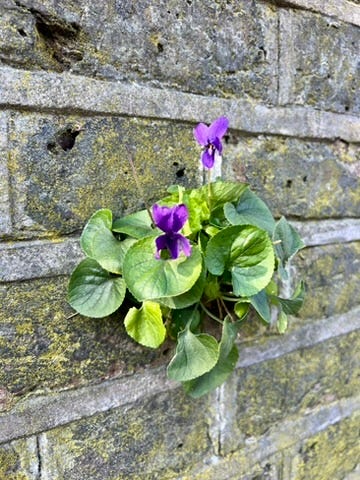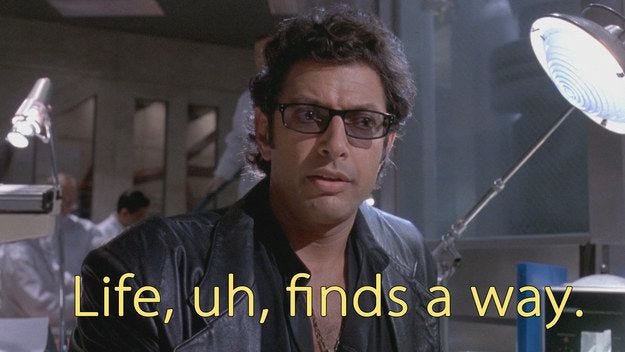Ten Things I've Learned About Gardening
Especially in an urban setting such as London, where it pays to get really creative about growing.
As a beginner gardener, it can feel daunting to do anything. A little like starting a new sketchbook. Or a new blog. What if I get it wrong? What if I’m no good at it? What if no-one likes it - what if I don’t like it either?
When I first started out with plants, I felt a mixture of excitement and adoration for the plant itself, and later, quiet anxiety about keeping it alive. At least with stationary nothing dies if you have a “black thumb”; the most you’ll get is a smudged page.
Over the years, and after having lost a number of plants to the Rainbow Garden, I’ve relaxed an awful lot. And if my opening paragraph resonated with you, then trust me — you will too. I’d like to share some things I’ve learned over the years, specifically about gardening (urban, and otherwise), that may help you out there too.
1. Mistakes are good
Truly, you have no idea how many plants have died whilst being in my care, indoors AND outdoors. The numbers will never stop increasing as long as I’m still gardening, such is the nature of the beast. I’ve had plants that have dried out, become waterlogged, infested with fungus gnats, eaten by slugs and snails, snapped in half by squirrels, over-pruned and never recovered, forgotten and neglected. Mistakes have been made.
While it’s not the result we aim for, it’s OK if plants die. Every error made along the way has made me a better plant-friend. The learning curve is real.
2. You don’t need lots of space
You may remember growing cress in Science class at school, on a petri dish or in a bottle cap or similar. Nothing has changed — you can use almost any small space or container imaginable to give a plant a home; a plastic bottle, a juice carton, an old shoe — get creative! You don’t need lots of, or any, ground space to start a thriving garden of your own.
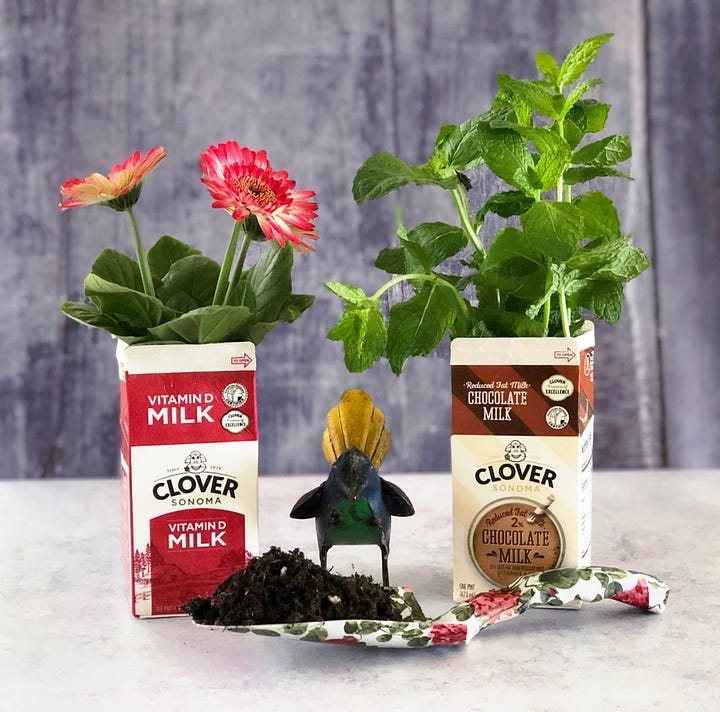
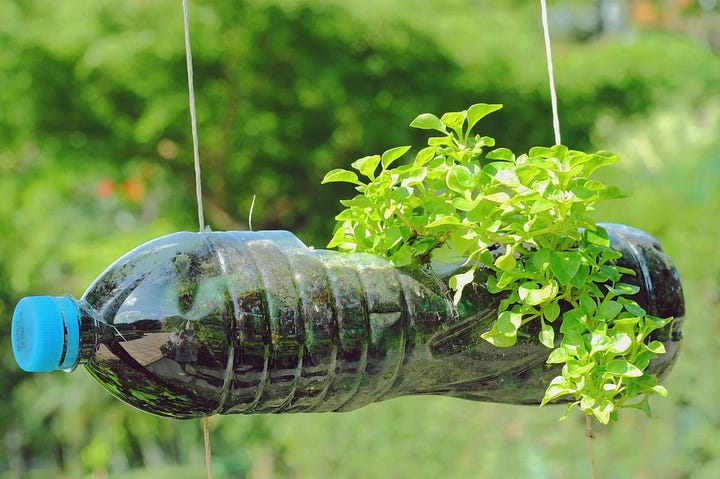
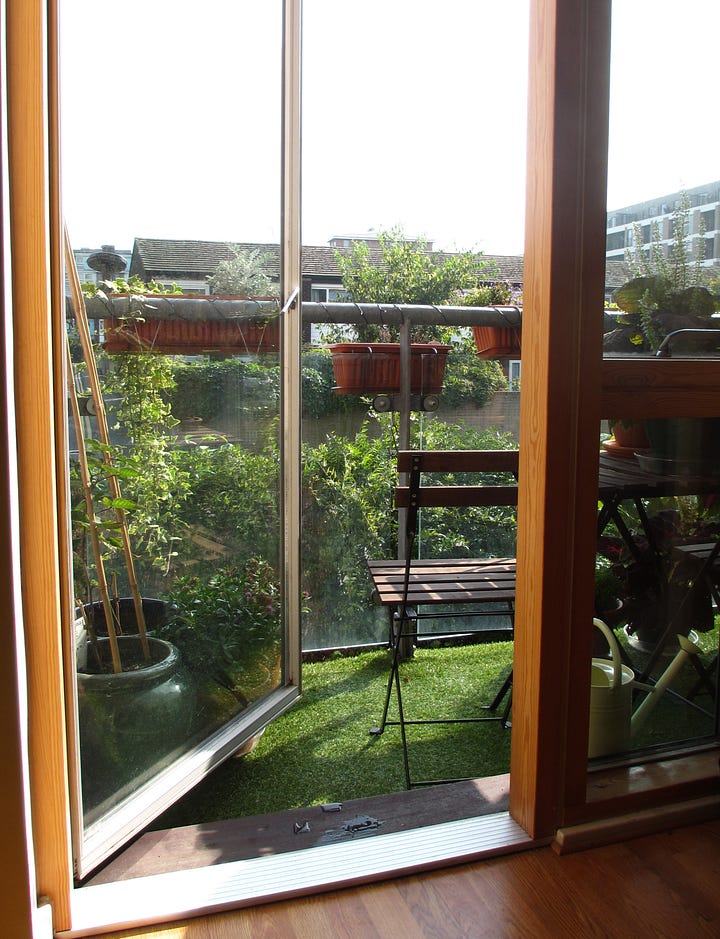
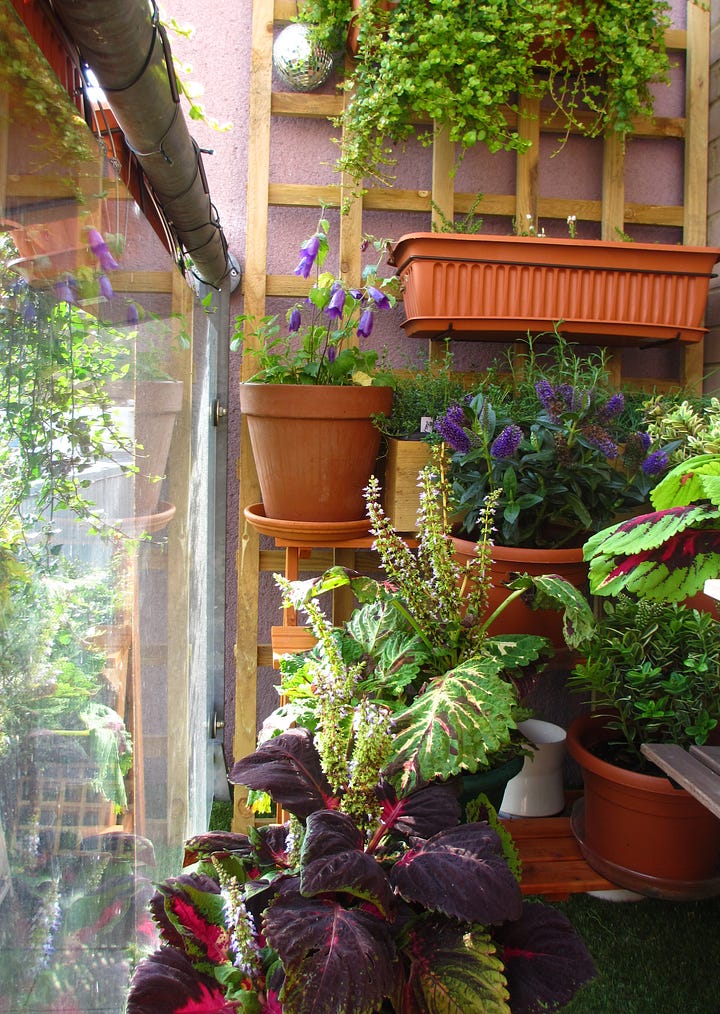
Vertical planting is hugely popular, especially in urban areas when space is in short supply and many people live in flats. I’m a huge fan of seeing every angle and surface as a potential grow space — if you can’t go out, then go up! Create anchor points for things to hang and you’ll start to see just how much space you really have.
3. You don’t need to spend lots of money
I mean, you CAN if you want to, but there’s really no need. Gardening is one of those hobbies where something beautiful and nourishing can be created for absolutely nothing whatsoever if you know where to look.
Use recycled containers to give your seeds and plants a home. Check out your local Freecycle, Facebook Marketplace, or Olio for local freebies. If you have any green-fingered friends, perhaps they can offer you some cuttings to propagate or divided plants. Seed Swaps and Seed Banks are becoming more common in cities too, and can be a fantastic place to pick up some treasures. All the major supermarkets sell low-cost flower and vegetable seeds and plug plants from March-September.
See if you have a local Community garden, as many will offer free advice, workshops and hands-on garden-care experiences in a group setting. They may also have regular plant sales.
The key to keeping costs down is to keep an eye out for free and end-of-line items, and to buy in-season.
4. Your hands are your best tools
Gardening tools can make any task quicker and less-messy, but I find that most regular gardening jobs can also be done with just your hands.
Digging holes and drills (shallow furrows for seeds), scooping and mixing compost and soil, sprinkling seeds. Fingers are more dextrous and gentle when dividing larger plants and rootballs. Even deadheading can be done with a quick hold-and-snap.
And once your plants are settled, you can locate and remove weeds with more precision using just your fingers, disturbing the plant less.
There’s so much science behind the theory that getting your hands dirty is beneficial to you. Literally getting in touch with the earth works miracles for our physical and mental wellbeing, reducing cortisol levels and providing anti-depressant qualities. So get those fingernails dirty with confidence.
5. Plants can be grown anywhere
We’ve seen them; the plucky, random weeds emerging from the cracks in the pavement. The tiny flower that somehow made its home on a vertical surface against all odds. Sycamore saplings growing in gutters. There’s even a buddleja bush that’s been growing on the top of our neighbours roof for the last few years.
Plants require usually only three necessities: light, water and drainage. But, depending on the plant you choose, you may not even need that much light, or much water, or any drainage at all. For instance, air plants require nothing from us — they can just exist on your coffee table.
Having some idea of the conditions of your proposed planting spot is helpful — does it get lots of sun, or hardly any? Is the soil always dry and sandy, or is it boggy? — but plants will always communicate when they’re not happy, and trial and error is an effective way to learn (see no.1, above). Just have a crack at it.
6. A weed is just a plant in the “wrong” place
An old adage, but it’s so true. It should come as no surprise that he inconvenient plants we often blacklist as weeds are some of the most important resources for the native wildlife in our cities of all.
That dandelion stuck in the paving slab? A vital food source for pollinators, and delicious for us to eat.
White and Red Clover, and Green Alkanet, also beloved by bees.
Broadleaf plantain and Dock, known for their anti-inflammatory properties.
Wood Sorrel and Creeping Buttercup both provide soft ground-cover that provides interest and helps to retains moisture.
Nettles make a refreshing tea (if you’re brave enough to pick the tender leaves).
Now, while not all weeds are "unwelcome”, there are a few that I’d prefer not to have to deal with due to their destructive abilities. Japanese Knotweed, for example, and Mare’s tail. But even bindweed is a haven for nature.
The aim is to respect the balance, especially in urban areas where “the green between” can be particularly lacking, and thus more important to preserve.
7. There is such a thing as “too much water“
Root rot. Not fun. Indoor plants are especially susceptible to it, trapped in their outer pots. As a good rule of thumb, no plant (other than aquatic plants) want to be sat in water for extended periods of time.
Indoor plants:
Check if the soil is dry; put your finger in the compost or soil to check moisture levels, about 2”-3” down. You can also just lift the pot to feel if it’s lighter than expected. If so, its dry. If water is needed, give it a drink (but not a bath!).
Outdoor plants:
Much the same as before, a finger test will tell you if the soil outside is dry. Damp soil will also appear darker than drier soil. You should check the soil beneath mulch if you’re using it.
8. Use better suppliers for better results
It’s convenient and tempting to buy the cheap seeds, the bargain deals online for 1000 plug plants, the £2 value compost bag. And that’s fine.
But, if I may, I would like to suggest an alternative approach. One that would benefit you, your garden and the environment much, much more.
Investing can feel hard, especially if you’re on a budget. However, making a good investment in gardening doesn’t necessarily mean a huge increase in outlay. The difference between a low-quality mass-produced packet of seeds and a high-quality, organically produced packet of seeds may only be £1 in money-terms, but the effective differences can be massive.
The risks of buying cheap seeds can include much lower germination rates, reduced vigour leading to lower yields and more pest-prone plants, poor results from unstable genetics. And simply not knowing where they came from, by what means or processes.
Likewise, cheap seedlings can often be of much poorer quality and have shock trouble when transplanting as the plants have been forced to grow faster than usual.
Compost quality is extremely varied. Many cheap composts and even more expensive big names (I’m looking at you, Miracle-Gro) are — in my experience — absolute trash: full of plastic, chunks of bark and dry as a bone. Sorry, not sorry.
Buying the slightly more expensive options mean you’ll get more reliable germination rates on seeds, stronger plants, better varieties, high nutrition for your plants and significantly reduced occurrences of microplastics re-entering the environment.
In conclusion, while saving money is always appealing, choosing quality seeds and plants from reputable sources can ultimately save you time, effort, and frustration in the long run.
9. Recommended planting distances are just a suggestion
Every seed packet, every plant label and gardening website, will tell you how far to place your plants from one another. This makes logical sense, as plants will spread a certain width and height eventually according to their breeds and varieties. I used to follow these guidelines - nay, RULES - religiously.
But I confess, I found the bare spots in-between a frustration, utterly lacking. So, despite not having any physical room for margins of error, I started experimenting against the rules: I went off the rails, I was uncontrollable, suddenly there were plants in much closer proximity to each other than recommended!
And it was fine. Better, even, than before. The plants grew closely and filled out the spaces. The garden started to look bigger, more bountiful and natural, and a bit wild.
I will say there was one caveat: I'd done some planning ahead. I'd thought hard before planting about what-would-flower-when in the season, and the eventual height of the plants occupying the same areas. Whether they had columnar or bushy forms, and what kind of light they needed. This made it easier to know if anything would be unhappy. So far, no regrets.
10. Nothing is permanent
“The only constant in life is change” — Heraclitus
Time to get a little philosophical.
A garden is a perfect analogy of life. Things come and go, flourish, and decline. Plants are happy one year, miserable the next. I’ve personally got a habit of moving elements around multiple times until it “feels right“ (though I always try to keep their travel to the dormant months).
A dead plant might not actually be dead. Cut it back to reduce its energy requirements and give it some love, it might just revive itself (you’d be amazed how some plants just need a rest and burst back when restored - much like anyone).
Trends change, plant varieties change, our lifestyle-needs and preferences change. Last year was the wettest on record, now everything is dried to a crisp, and so on.
Nature will ebb and flow, even in the city, and it is up to us to push against it or to accept the momentum. I personally found more peace when I accepted that I cannot truly control the garden; nature will prevail, and we are merely custodians.





